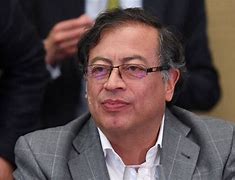Amid the hustle and bustle of global trade dynamics, a significant development has emerged from the corridors of power in Washington and Beijing. The recent ceasefire in the U.S.-China trade war has set tongues wagging and markets buzzing with optimism. Let’s delve into the details of this crucial détente between two economic giants.
—
“A 90-day pause”
The announcement made by Treasury Secretary Scott Bessent regarding a breakthrough in trade discussions with China sent shockwaves through financial markets. This temporary truce, though met with cautious optimism, has provided a glimmer of hope for investors and economists alike.
In an era where tariffs seem to dominate headlines and economic forecasts, the decision to hit the pause button on escalating tensions is nothing short of a relief. The stock market rally that ensued following this news speaks volumes about the significance of such diplomatic gestures in today’s interconnected world.
Framework Agreement Details
As we dissect the intricacies of this agreement, it becomes evident that both parties have made concessions aimed at fostering a more harmonious trading relationship. The United States is set to reduce tariffs on Chinese imports significantly, while China reciprocates by easing duties on American goods.
While sector-specific tariffs remain untouched for now, there is a palpable sense of progress in these negotiations. The removal of non-tariff export controls by China signals a willingness to navigate towards smoother trade waters in the future.
Expert Analysis
Jamieson Greer, the U.S. trade representative, sheds light on the finer points of this deal, emphasizing its potential impact on various industries. The looming specter of disrupted supply chains due to escalating tariffs has kept businesses on edge, prompting concerns about price hikes and investment uncertainties.
Industry stalwarts like Apple are already contemplating strategies to mitigate tariff-related challenges without causing alarm among consumers. This delicate balancing act underscores the ripple effects that political decisions can have on everyday economic landscapes.
The Human Element
Beyond balance sheets and market indices lie stories of individuals impacted by these policy shifts. Workers anxiously await stability in labor markets as central banks monitor inflation rates amid ongoing trade negotiations. The ebb and flow of international commerce resonate far beyond boardrooms into households worldwide.
President Trump’s endorsement of Monday’s agreement hints at a broader sentiment shared by many – that diplomatic resolutions are preferable to prolonged standoffs with far-reaching consequences for ordinary citizens.
—
As we navigate through these complex webs woven by international relations and economic policies, one thing remains clear – amidst uncertainties lurk opportunities for cooperation and understanding. The U.S.-China trade ceasefire serves as a testament to diplomacy’s enduring power in shaping our shared global future.








Leave feedback about this